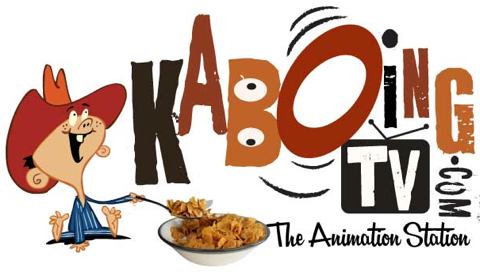The Underlying Reason Why Kaboing TV Failed To Take Off
Much debate has taken place over the last few days in regards to the current status as future of Joe Murray’s Kaboing TV project. The site’s apparent failures include:
- lack of viewers/eyeballs
- lack of new content
- poor site design
- original content not optimised for the web
- etc.
While all of these are valid points, they do tend to focus on the practical aspects of the site. In other words, things that can be changed relatively easily. New content is not hard to come across, site design can be improved and as for the original content, well that is something that can’t be helped once it is made, but it is hardly likely to pull the entire site down, especially if it is dedicated to showcasing a wide range of films.
No, there is one thing and one thing only that really caused Kaboing TV to stutter and that is community.
Yes, community is something that is still being figured out in the webosphere. Lots of social media “experts” will tout it, plenty of marketing folks will emphasise it in their presentations but “community” is still something that is spectacularly difficult to pin down.
First of all, is it viewers? Is it commentators? Is it creators? It is, in fact, all three.
Websites are the foundation of a successful community but their continued existence is dependent on the nature of the community as well as their level of involvement.
Let’s take for example, Cartoon Brew. It’s a website/blog that focuses on animation issues just the same as many others. So why do we keep it as our homepage and check it at least once a day? The answer is that Cartoon Brew has spawned a community with which we share a common interest (animation) but also because we have reasons to keep going back. If it isn’t for the exclusive news and videos, then it’s the comments or perhaps the comments on the comments.
If Cartoon Brew was lacking the surrounding community, then it would simply be another animation site on the web with nothing to differentiate it and it’s traffic would certainly reflect that.
So look at Kaboing TV in the same light. What was there to commend it outside of the site itself and the content? Very little I’m afraid. Kaboing TV sadly failed to grow a sustainable community that had people coming back regularly and interacting with each other.
Now of course, it’s hard to get a completely new site off the ground and Joe’s (quite logical) reasoning was that if he had some new shorts to go along with it, they would add something extra that would entice people to visit regularly at the beginning and hopefully spur the creation of the community.
Visitors are encouraged to comment, share and otherwise engage on the site, but that is the limit of what they could do. Content is curated (ostensibly to keep standards up) and favours the creator submitting their work. That’s great, but also assumes that there is a community ready and willing to devour the content. This wasn’t the case, and most people won’t put the cart before the horse.
What needed to happen was that the community would submit, approve and vote on new content themselves. The internet is full of examples where so-called crowd-sourcing has worked quite well in helping to build communities and websites. While it admittedly takes time for the numbers to grow, there is little sense in handicapping things from the start.
Kaboing TV is a fine idea and it is a concept that has promise. It’s just that someone was highly likely to fail with the first effort and unfortunately that someone was Joe Murray. The good news is that whoever chooses to follow him stands to learn from his mistakes and will hopefully create an animation site complete with a vibrant and active community to support and sustain it.
The Underlying Reason Why Kaboing TV Failed To Take Off Read More »


